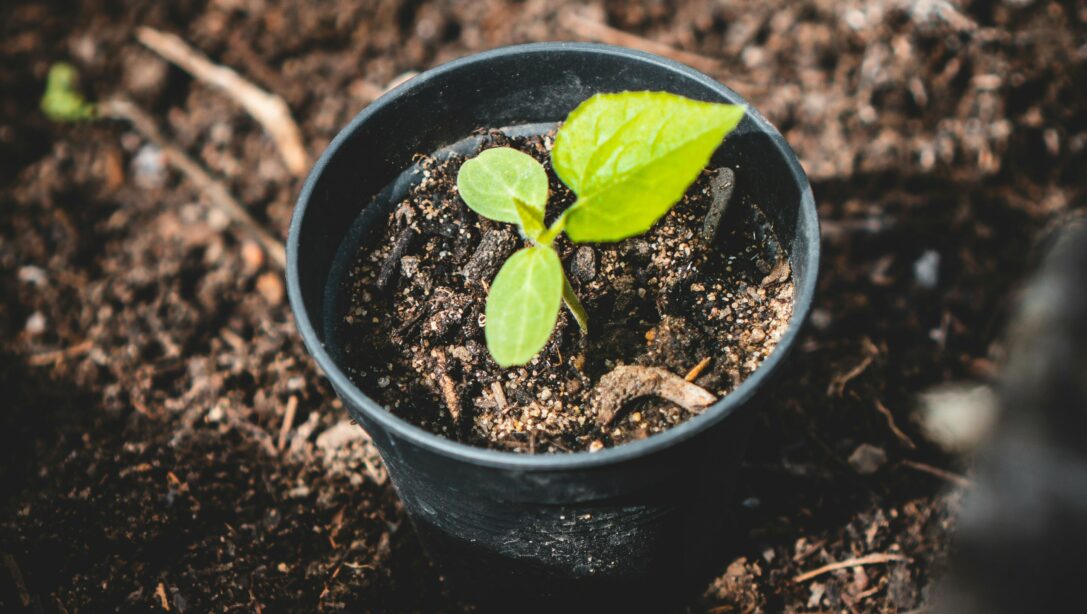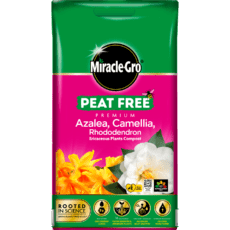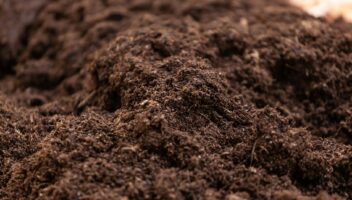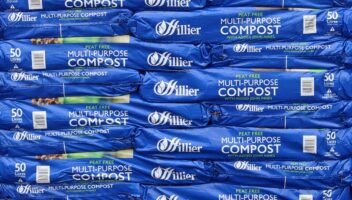Moving to peat free compost is a significant move to more sustainable gardening as it protects our wetlands and helps to reduce the impact of habitat destruction and global warming.
Whilst a positive move, that isn’t to say it doesn’t present its own challenges for all gardeners alike. Whether you’re new to gardening and are trying to get your head around the new and emerging world of peat free compost, or a long-term veteran that is struggling to achieve consistent results, we’re here to help.
Here are our tips, tricks, and general advice for growing with this emerging medium.
Table of Contents
1. Find the Right Peat Free Compost
Choosing your compost is as important, if not more so, as choosing your plants. Compost is the growing medium in which your plants, fruit, and vegetables will exist in, therefore ensuring that you have the right one is vital.
When considering peat-free compost, the array of options available might seem a little daunting. Differing plants and containers have unique needs; for instance, ericaceous plants thrive in acidic soils, while houseplants demand compost suitable for long-term container growth.
Remember to check for the Responsible Sourcing Scheme logo on the packaging which can help you to identify the environmental rating of that bag of peat free compost.

2. Become Water and Moisture Aware
Peat free compost can vary greatly in performance depending on its composition and the brand you select. Some compost blends might exhibit exceptional water retention, which can be a benefit but somewhat misleading. Other varieties might drain rapidly and not hold onto the moisture as well, resulting in dry compost hours after watering.
Ensure that you regularly check the moisture levels of your compost and that you dig below the surface to do so. By pushing your finger into the compost and delving beneath the surface you might notice that whilst the top is totally dry, the underneath could be well watered, or worse, waterlogged.
3. Ensure Your Plants Have Good Drainage
To avoid water-logged bottoms in your container, which can cause a host of different problems, add holes to the bottom to ensure good drainage. Allowing water to drain freely will protect the health of your plants and prevent root rot.
Something to keep in mind is that paper based containers allow moisture to seep through, meaning that you don’t need as many holes in your paper pots as you will with plastic ones.
Efficient drainage, whilst beneficial for preventing waterlogging, can lead to the rapid leaching of nutrients from the soil. As the water flows through the compost and drains, it often carries essential minerals along with it, diminishing the soil’s nutrient content over time. This nutrient depletion can impact plant health and growth.
4. Use Water Retention Gel for Moisture Control
If your peat free compost mixture struggles to retain water consider incorporating a water retention gel to give it some support. Mixing this gel in with the compost during potting ensures that when you water your plant the gel will absorb some of the moisture. As the compost dries out, the water retention gel gradually releases moisture back into the soil, reducing the need for frequent watering.
5. Regularly Feed Your Plants
As mentioned previously, good drainage, whilst beneficial to the plant’s overall health, can wash away essential nutrients. Therefore by providing a regular dose of plant food you can counter this effect. Some plant feeds come in the form of controlled release fertilisers or a liquid, whilst others may be a great organic addition to peat free compost.
The type of plant food you’ll use will depend on what you’re growing, therefore it is crucial to do some research and ensure that you get the correct product for the job.
6. Use Organic and Natural Fertilisers
With the movement to peat free being encouraged it makes sense to also look for eco-friendly and natural fertilisers. These can come in an array of different forms, from seaweed to manure, and even bonemeal.
Organic and natural fertilisers are long-term, slow acting sources of food for your plants. They avoid fertiliser burn from their slow release meaning your plants are happier and healthier overall.
7. Be Aware of Crust Build Up
As mentioned earlier, watering peat free compost can go one of two ways. However, you may notice that when you water your plants with a water can or spray gun, the water seems to just roll off or will overflow with very little input. This is generally because your pots and containers have formed a compost crust on top, but don’t fret as this is natural.
Simply break it up with your fingers before you water your plants to ensure that the compost gets the required and expected levels of moisture.

8. Manage the Fungi
You may be alarmed to see mushrooms growing in your peat free compost, especially during the colder months. This isn’t a cause for concern however and indicates a healthy mixture. The mushrooms are most likely feeding off the wood content in the compost.
Simply pick the mushrooms off and continue growing. The mushrooms could even be added to your compost which may release spores and aid in the composting process.
9. Make Your Own Peat Free Compost
By using a mixture of green waste; annual weeds, veg peelings, leafy debris, and brown waste; shredded wood cuttings, and cardboard, you can easily make your own compost. Buy an appropriately sized composting bin for your garden, or build one, and use your garden waste to create your own compost.
By making your own compost you’re in full control of what does and doesn’t go into it. This means you can control the nutrients, and even predict the expected outcome. It also means that less waste will go to landfill, and you’ll spend less in the future buying compost.
10. Mix Your Own Compost with Store Bought Compost
Mixing your own compost with store-bought peat-free compost means you can tailor the blend to meet the specific needs of your plants and soil. This DIY approach not only reduces waste by recycling organic matter but also enhances the nutrient content and microbial diversity of the compost, promoting healthier soil and vigorous plant growth.
Experiment with different ratios and ingredients to find the perfect blend that suits your gardening requirements.
11. Purchase The Right Compost
Different types of compost serve unique purposes, therefore picking the right one for the job at hand can change the outcome. Here are some common varieties and their purposes:
- Multi-purpose peat free compost is the general go to and has a wide variety of applications.
- Ericaceous peat free compost has a more limited selection but is perfect for acid-loving plants.
- John Innes peat free compost is perfect for pots and containers which will be home to plants for two or three years.
- Carnivorous peat free compost is an emerging market showing promising results for carnivorous plants.

12. Use Peat Free Compost in the Right Locations
Peat free compost is well-suited for use in pots and containers due to its lightweight and free-draining nature. However, when it comes to bed and borders, especially those with larger plants or extensive root systems, using peat free compost may not provide adequate structural support or moisture retention.
In the case of beds and borders you can consider adding peat free compost as a soil amendment rather than the primary growing medium.
13. Use Peat Free Compost as Mulch
Adding peat free compost to already existing soil can help to improve the overall structure, enhance its moisture retention, and boost nutrient levels. Adding your own homemade compost on top of the soil can help to conserve moisture, suppress weeds, and gradually enrich the soil over time.
14. Take it Slow to Learn About Peat Free Compost
Overall, transitioning to peat free compost may require some adjustments in your gardening practices. It’s important to take the time to observe how plants respond to the new growing medium, monitor moisture levels, and assess nutrient requirements.
Don’t be worried about experimenting with the different blends, ratios, and application methods. All of which will further your knowledge around compost, various plant species and their growing conditions.
If you want more information regarding peat free growing, be sure to visit our free online resource hub to further your understanding and maximise the benefits for your garden.







